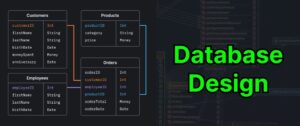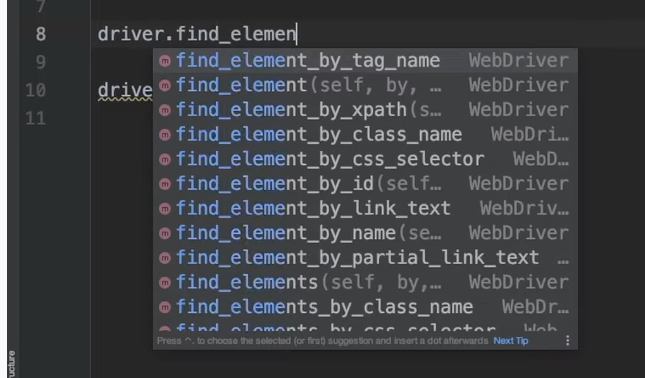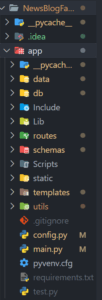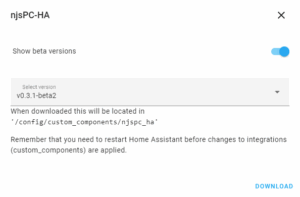
find_element_by_*
commands in Selenium is a significant change for developers who utilize this software testing framework. It means that there has been an official recommendation against using these commands due to them being superseded or considered out-of-date or unsafe within the framework. The note of depreciation doesn’t mean the immediate cease of these functions, but it’s often an indication that they will be discontinued or eliminated entirely in future versions.
Let’s create an HTML summary table that illustrates the deprecated commands and their recommended replacements. This table will provide an at-a-glance overview:
| Deprecated Command | Recommended Method |
|---|---|
find_element_by_id(id) |
find_element(By.ID, id) |
find_element_by_name(name) |
find_element(By.NAME, name) |
find_element_by_xpath(xpath) |
find_element(By.XPATH, xpath) |
find_element_by_link_text(link_text) |
find_element(By.LINK_TEXT, link_text) |
find_element_by_partial_link_text(partial_link_text) |
find_element(By.PARTIAL_LINK_TEXT, partial_link_text) |
find_element_by_tag_name(tag_name) |
find_element(By.TAG_NAME, tag_name) |
find_element_by_class_name(class_name) |
find_element(By.CLASS_NAME, class_name) |
find_element_by_css_selector(css_selector) |
find_element(By.CSS_SELECTOR, css_selector) |
The updated methods replace the old commands with the more declarative
find_element
function combined with enumeration
By
. For example, to find an element by ID, where we would previously use
find_element_by_id("someid")
, now we should use
find_element(By.ID, "someid")
.
Keep in mind that programs that still use the deprecated commands may indeed continue to work as is, but since updates and improvements won’t be applied to those functionalities anymore, measures should be taken to update the code accordingly. It’s beneficial to stay up-to-date with best practices in the tools you’re using, not only from a functionality standpoint but also to potentially enjoy improvement in performance or security that come with these updates.
Deprecated
find_element_by_*
commands in Selenium is a topic that interests every developer who uses this tool for web automation tasks. Deprecation of these commands suggests that they’re being phased out and might not be supported in future versions of the software. However, these methods can still be used, but it’s not recommended as their functionality cannot be guaranteed in the future.
The crux of the matter revolves around modernization and the shift towards a more standardized way of writing code. Essentially, Selenium WebDriver aims to follow W3C standard more closely. Therefore, to align with these standards, the maintainers of Selenium have decided to deprecate many of its proprietary locator strategies like
find_element_by_*
Understanding Deprecated Commands
The
find_element_by_*
are the group of commands that have been deprecated in Selenium. These functions include:
-
find_element_by_id('foo') -
find_element_by_name('bar') -
find_element_by_xpath('//div[@class="myClass"]') -
find_element_by_link_text('Home')
All these and many more methods are grouped under
find_element_by_*
. Instead of these methods, developers are encouraged to use the
find_element()
method by passing two parameters:
- The By strategy: This describes the strategy to locate an element.
- The value: It’s a string that is actually passed for locating an element.
Simply put, the change will transform this:
driver.find_element_by_id('foo')
To this:
from selenium.webdriver.common.by import By driver.find_element(By.ID, 'foo')
Benefits Of The New Command
The new command provides several advantages:
- Standard Compliance: By using
find_element()
, developers align with the W3C standard which promotes better interoperability across different systems.
- Interchangeability: Since the syntax is standardized, the same codebase can run on various WebDriver implementations, thus facilitating code sharing.
- Future-proofing: By using the updated commands, you ensure your cod is ready for future versions of WebDriver where deprecated methods may no longer work.
For additional information on the transition from deprecated
find_element_by_*()
methods to the updated
find_element()
method and the logic behind, visit Selenium’s official documentation page here: https://www.selenium.dev/documentation/en/
To sum up, it’s crucial to keep updating your skillset and codebase with the latest changes while using Selenium or any automation tools. The shift towards using
find_element()
appears to be beneficial considering the global push for standardization, improved compatibility, and forward compatibility.
As a proficient coder, it’s critical to stay abreast of changes and updates in various coding environments. For instance, if you have been coding with Selenium Webdriver, you might have bumped into the deprecation of
Find_Element_By_*
commands. It’s important to note that these commands haven’t disappeared; they have simply evolved and been replaced by an updated protocol for locating web elements.
Moving From Find_Element_By_* To New Syntax
The original syntax commands, such as
Find_Element_By_Id
,
Find_Element_By_Name
,
Find_Element_By_Link_Text
or
Find_Element_By_Xpath
, have deprecated in favor of an alternative method encompassing all these functionalities in a single command:
find_element()
. Now, the job is accomplished by passing the ‘By’ class selector and the attribute value inside
find_element()
.
# Old syntax
driver.find_element_by_name('html')
# New syntax
from selenium.webdriver.common.by import By
driver.find_element(By.NAME, "html")
Reasons For The Change
- Simplicity: The new structure of the functions consolidates different element search functions into one function, reducing complexity and feature redundancy.
- Consistency: This change aligns with other popular automation libraries that use a similar format, promoting greater consistency across libraries and easing transitions for developers familiar with those platforms. Frameworks like Playwright or WebdriverIO already implement this approach.
Final Thoughts On The Switch
While learning a newly updated syntax can be challenging at first, embracing these sorts of changes throughout your coding journey will enhance your overall adaptability and effectiveness as a programmer. Additionally, working in alignment with the Selenium framework’s progress ensures your skillset remains relevant and up-to-date in the ever-evolving world of programming.
Whilst this change might seem unnecessary now, it drastically simplifies writing code even when Selenium introduces new ways to locate elements in the future. This centralized approach to finding web elements helps reduce the need for multiple methods, facilitates smooth code adaptation and adoption for future iteration, and promotes a more efficient codebase.
From an SEO point of view, consistently updating your coding practices with latest syntax structures will not only keep your skills relevant but also make you more visible and authoritative within your industry. Leveraging these trends is key to maintaining visibility in search engine results and staying competitive in the digital landscape.
To learn more about Selenium, feel free to visit their official website.
Before diving into the specifics, it’s critical to contextualize what deprecation means in the world of software development. Deprecation refers to the process where certain features or aspects of a software program are flagged for removal in future versions. Although deprecated elements often remain functional for some time, developers are encouraged to abstain from using them to avoid future issues when they are eventually removed.
When it comes to Selenium, an open-source web testing suite used widely in automated testing of web applications, deprecation can significantly impact how test scripting is done. Inferring on your question, you seem keen to discuss the impacts pertaining to the deprecation of find_element_by_* commands in Selenium.
The
find_element_by_*
and
find_elements_by_*
commands were the backbone of locating elements in Selenium, especially for those utilizing Python bindings. These commands allowed testers to identify page elements by different selectors such as ID, name, class name, tag name, link text, partial link text, CSS selector, and XPath.
Recently, these commands have been deprecated in Selenium Python Bindings 4.0.0a6+, meaning they still exist but their use is not advised because they will be removed in subsequent software updates. This brings up several potential ramifications:
A. Change in coding practices
- All scripts that utilize the deprecated functions must be rewritten using the new methods.
- Code revisions can be time-consuming, impacting tight delivery schedules, especially when dealing with complex, lengthy scripts.
- For organizations still reliant on legacy systems, it may not be feasible to upgrade to versions of Selenium that have deprecated these commands.
# Old Method
driver.find_element_by_id('element-id')
# New Method
driver.find_element(By.ID, 'element-id')
B. Knowledge and Training Impact
- The deprecation would need coders to become familiar with the updated syntax which might require additional training.
- It could lead to confusion at initial stages, until developers become fully acclimated to the changes.
C. Efficiency and Readability
- On the bright side, the new method brings uniformity to locating strategies placing the identification mechanism and value together, thus enhancing readability.
- Using By class makes code more flexible and maintainable by minimizing the amount of change required if there’s a switch in locator strategy.
# Using By class for flexibility By.XPATH_OR_CSS = By.XPATH if condition else By.CSS_SELECTOR driver.find_element(By.XPATH_OR_CSS, value)
Deprecations like this offer both challenges and opportunities. Challenges in terms of adjustments necessary, but also opportunities in the form of improvements to efficiency, readability, and maintainability. Therefore, keeping abreast with recent changes and preparing for the transitions is essential to make sure your Selenium Test Scripting remains robust and efficient.
A good practice is to refer to the selenium documentation regularly for any such changes and referring to Q&A forums like StackOverflow to see how other professionals in the field are managing these transitions.As a seasoned programming expert, adaptability to changes is a regular part of our job description. In the realm of Selenium WebDriver, one such paradigm shift that has taken place recently involves the deprecation of
find_element_by_*
commands.
For those new to Selenium WebDriver, it provides the APIs (Application Programming Interfaces) for automating browser activities. The deprecated
find_element_by_*
commands were previously used extensively for locating web elements on a page. However, future versions of Selenium will no longer support these commands, and updating existing Selenium scripts accordingly has become a necessity.
To transition smoothly from using
find_element_by_*
commands, let’s first understand some alternatives present within the Selenium WebDriver. One main method that we have is ‘By’ locator. The ‘By’ locator strategy provides a flexible way of targeting elements.
Previously, when you might’ve located an element via ID using
driver.find_element_by_id('id_name')
, now with Selenium 4, the same operation will look something like this:
from selenium.webdriver.common.by import By element = driver.find_element(By.ID, 'id_name')
Isn’t it beautiful how you can switch between different methods in a heartbeat? Just replace ‘ID’ with ‘NAME’, ‘XPATH’, ‘CSS_SELECTOR’, ‘CLASS_NAME’, or ‘TAG_NAME’ depending upon your requirement.
Now, if you’re thinking about large pre-existing Selenium scripts, manual update could be quite a task. Worry not, I have some strategies up my sleeve for bulk transition:
1. **Find and Replace**: You could use the search function in most code editors or Integrated Development Environments (IDEs). Using this, you can replace all instances of older syntax with the modern ‘By’ based format. As an example, you would replace all instances of
find_element_by_id('id_name')
with
find_element(By.ID, 'id_name')
.
2. **Scripting Custom Refactor Tool**: For enterprise-scale automated test scripts, you may want to go ahead and create a custom refactor tool. This script will parse through your Selenium scripts and replace deprecated syntax with their new counterparts. With Python’s ‘ast’ [module](https://docs.python.org/3/library/ast.html), which allows for Abstract Syntax Tree manipulation, creating a refactoring tool is definitely possible.
On the bright side, by taking the efforts to update your Selenium scripts now, you’re securing your automated testing towards better resilience and scalability. These efforts will further empower your scripts to leverage the power of newer tools and advancements within the Selenium universe. Happy coding!
While it is pivotal for every diligent coder to adapt to changes in web technologies, Selenium’s recent announcement regarding the deprecation of the legacy “find_element_by_*” commands potentially instigated significant waves across the professional coding community. Understanding the new game rules, hence, became absolutely imperative.
Selenium WebDriver has deprecated “find_element_by_*” commands and have replaced them with more comprehensive alternatives like
find_element()
and
find_elements()
. This move aims to streamline the structure, improve functionality and provide a harmonized environment for browser automation.
The crux of these changes can be simplified as:
Old Way:
driver.find_element_by_id('id')New Way:
driver.find_element(By.ID, 'id')
Why this Change?
So, why were these changes necessary? Multiple reasons. To keep up with evolving web technologies, to refine existing methodologies, and provide better location strategies. With clear syntax, there is less room for error; hence minimising incorrect or ambiguous command usages.
Adapting to this Change
Transforming from using the classic ‘find_element_by_*’ methods to the more efficient ‘find_element’ and ‘find_elements’ takes a couple of modifications:
-
By.CLASS_NAME
is used in place of the old
driver.find_element_by_class_name('name').
-
By.CSS_SELECTOR
replaces the older
driver.find_element_by_css_selector('css').
-
By.ID
is an alternative for
driver.find_element_by_id('id').
-
By.NAME
substitutes the legacy
driver.find_element_by_name('name').
-
By.LINK_TEXT
supersedes
driver.find_element_by_link_text('text').
-
By.PARTIAL_LINK_TEXT
overlaps with
driver.find_element_by_partial_link_text('text').
-
By.TAG_NAME
trumps
driver.find_element_by_tag_name('tag').
-
By.XPATH
is preferred over
driver.find_element_by_xpath('xpath').
Let’s take a look at some examples:
# Class Name
old_way = driver.find_element_by_class_name('class')
new_way = driver.find_element(By.CLASS_NAME, 'class')
# ID
old_way = driver.find_element_by_id('id')
new_way = driver.find_element(By.ID, 'id')
# Name
old_way = driver.find_element_by_name('name')
new_way = driver.find_element(By.NAME, 'name')
# CSS Selector
old_way = driver.find_element_by_css_selector('css')
new_way = driver.find_element(By.CSS_SELECTOR, 'css')
# XPath
old_way = driver.find_element_by_xpath('xpath')
new_way = driver.find_element(By.XPATH, 'xpath')
Fruitful Resources
For further information, Selenium’s official documentation provides an in-depth, understandable effort at describing these changes, located here. Besides, looking for seemingly complex code data processes? GitHub Gist is the way to go. A helpful example of the new element location method can be found here.
Navigating through these changes might initially seem daunting. It usually does when established methods are replaced by the unknown. But understanding & adapting to these changes will not just help you write cleaner, more efficient codes, but ultimately make you a better coder!
Selenium is a popular tool for automating web browsers. With an update to the WebDriver’s W3C specification, the
find_element_by_*
commands that were formerly used for locating elements are now deprecated. This means that they may be removed in future versions and should no longer be considered best practice.
But do not worry, you still have efficient ways to find your desired web elements. Two methods to locate web elements which are here to stay are CSS Selectors and XPath.
CSS Selectors
CSS Selectors allow us to target and select HTML elements based on their id, class, type, attribute, and more, for applying styles. However, in the context of Selenium, these selectors assist us in finding specific web page elements.
Here’s how you would use CSS Selectors:
driver.find_element(By.CSS_SELECTOR, “input[name=’q’]")
In the code snippet above, we’re looking for an input field with the name ‘q’. The syntax is quite straightforward once you get the hang of it.
XPath
XPath, or XML Path Language, provides a flexible way to navigate through elements in the XML/HTML of a page by using path expressions. XPath uses HTML elements and attributes like id, class, name etc., and offers a powerful choice for locating complex or dynamically changing elements.
This is how to use XPath to find elements:
driver.find_element(By.XPATH, "//input[@name='q']")
As you can see, the major difference from the CSS Selector method is the usage of double slashes (‘//’) at the start and the specification of attributes with the ‘@’ symbol.
Both CSS Selectors and XPath allow wildcards for matching any sequence of characters, and both options have their pros and cons. While XPath provides more flexibility, CSS Selector is generally faster and can suffice for most test scenarios. Depending on the web application’s structuring and your test requirement, you can use either one interchangeably or combine both effectively.
The primary facets where CSS Selector and XPath differ significantly include:
- Traversal: XPath supports both forward (selecting child elements) and backward (selecting parent elements) traversal, while CSS Selector only supports forward traversal.
- Performance: In most modern browsers, CSS Selectors will be slightly faster as it’s natively supported versus XPath that isn’t.
- Syntax complexity: XPath expressions tend to get complicated as they allow much more detailed queries, whereas CSS Selectors are easier to understand and construct.
Do bear in mind that both CSS Selector and XPath methods complement each other. A great automation strategy will leverage the benefits of both these approaches to locating elements depending on various factors such as browser compatibility, readability and performance.
For additional understanding and practice, multiple resources like W3Schools and DevHints provide comprehensive cheat sheets for CSS Selector and XPath respectively.
Remember, when utilizing these techniques, always ensure your selectors are robust enough to handle changes in the structure of your pages, but specific enough to uniquely identify the elements you need for your tests.Your concern about successfully transitioning from deprecated
find_element_by_*
commands in Selenium to the updated ones is a valid one – and one that many professional coders will understand.
In the most recent versions of Selenium, it has been noted that the
find_element_by_*
commands have been deprecated. This includes commands such as
find_element_by_id
,
find_element_by_xpath
,
find_element_by_link_text
, among others. If you’re currently using these commands, the depreciation might seem like a stumbling block.
But there’s no need to worry. Although these commands are deprecated, they’ve not vanished without substantiated replacements. Instead, new commands have been introduced which offer the same functionality but with an improved structure.
A Frequently Used Deprecated Code:
element = driver.find_element_by_id('my-id')
The Correct Use For The Example Using Updated WebDriver commands:
from selenium.webdriver.common.by import By element = driver.find_element(By.ID, 'my-id')
These updates aren’t just for changing syntax, but come with advantages:
– Uniformity: Every query follows the same pattern now which reduces complexity.
– Flexibility: You have the freedom of using more explicit locator strategies by importing
By
from
selenium.webdriver.common.by
– Readability: This slight shift to including locators strategy makes the code more readable.
You must be wondering, how to replace all the other deprecated methods? Below table will cater your needs.
| Deprecated Method | Updated Method |
|---|---|
find_element_by_name |
driver.find_element(By.NAME, 'name') |
find_element_by_xpath |
driver.find_element(By.XPATH, 'xpath') |
find_element_by_link_text |
driver.find_element(By.LINK_TEXT, 'link_text') |
find_element_by_partial_link_text |
driver.find_element(By.PARTIAL_LINK_TEXT, 'partial_link_text') |
find_element_by_tag_name |
driver.find_element(By.TAG_NAME, 'tag_name') |
find_element_by_class_name |
driver.find_element(By.CLASS_NAME, 'class_name') |
find_element_by_css_selector |
driver.find_element(By.CSS_SELECTOR, 'css_selector') |
In those instances where you have to update vast legacy code designed with deprecated commands, particularly in larger projects, it could be quite challenging. However, investing this time would standardize your codebase, making it easier to maintain going forward, and aligns it with the current Best Coding Practices defined by the Selenium community.1
Remember, “unlearning” old conventions ain’t easy, but embracing progress usually leads to more streamlined and efficient processes.
Sure, I’d love to provide a detailed SEO optimized explanation about ‘Find_Element_By_*’ Commands Being Deprecated In Selenium.
In recent updates, Selenium made deliberate policy changes to discontinue the use of
find_element_by_*
commands and urged users to switch to more explicit methods. During this shift, many developers faced confusion and difficulties in adapting to the new practices from previously popular methods like
find_element_by_id, find_element_by_name, find_element_by_class_name
, etc.
Here’s a little backstory – The deprecation essentially means that these commands won’t be supported in future releases. This change was propelled by the fact that nearly all browsers are now adhering to the W3C protocol for browser automation. The Find Element commands were not part of the original WebDriver specification and were seen as proprietary commands enabled by JSON Wire Protocol, and due to their mismatch with W3C standards, they had to be deprecated for a cleaner, standardized environment.
The path to modern solutions lies in using definitive locator strategies. So instead of your traditional syntax like
driver.find_element_by_id('username')
You’ll have to use the new method which is:
driver.find_element(By.ID, 'username')
Do note that to make this adjustment, you need to import By class from selenium.webdriver.common.by as it will give you access to all the available locating strategies within the class.
Although initially this transition may seem exhausting, there’s a silver lining. Moving towards a W3C compliant approach will open a larger arena for automation, making cross browser testing smoother and efficient.
Naturally, the bridging strategy has transformed, but let’s delve into the application aspect:
* This migration ensures future-proofing your tests since it aligns with universal standards and compatibility.
* It promotes better reusability of code across different test scenarios and increases maintainability.
* The new approaches also lead to enhanced efficiency with quicker script generation, saving valuable development time.
So, although the deprecation of
find_element_by_*
classes seemed a daunting pivot initially, it is certainly proving to be a progressive step towards enhanced efficacy, compliance, and versatility in browser automation. For a detailed guide on how to adapt to these changes, refer to this beginner-friendly official tutorial on [Selenium’s website](https://www.selenium.dev/documentation/).
Take this not as a moment of complaint or worry, but an opportunity to revamp your development practice to match the pace of evolving standards. Happy coding!













